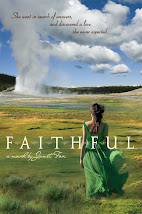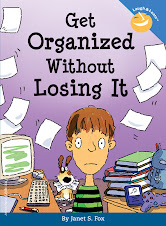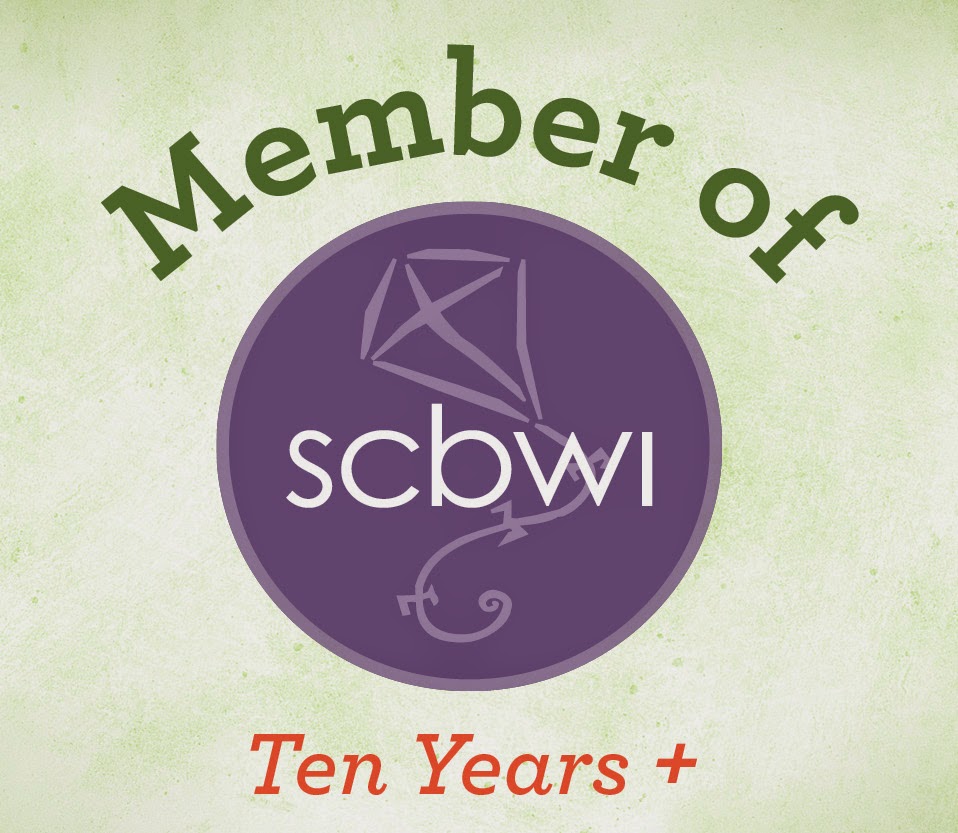Welcome to part two of my post about the process of writing my
YA short story “Waiting for Alice”.
***Spoiler Alert*** Just to
tell you, this blog post contains story spoilers. Read the full version of
“Waiting for Alice” in the first issue of Sucker
Literary Magazine at http://suckerliterarymagazine.wordpress.com/.
Can You Hear Me Now? When Characters Speak Through Revision,
Part Two
(In which Mima continues her search for the story’s ending)
...What I did
know in this draft was what Mia saw Angie doing at the dance:
Out in the hall, tucked into the dark space between a corner
and a bank of lockers, she is wrapped around a junior boy she called “sorta
cute” a couple of times. Their faces press together joined with suction cup
mouths. Angie’s arms twist high and tight around his neck. But his hands,
fingers spread, move freely, writhing and sliding over her boobs, then slip
down, down and around to hike up her short skirt…(“Peer Pressure,” 9)
I also knew that Mia’s response
(as in the original bit in “Faerie
Games”) was to find the Edmo character, and rush into an ill-fated kiss that
would make her “run to the bathroom and scrub…[her]…mouth over and over” (“Peer
Pressure,” 10). These images were as clear to me as my memory of the actual
event. What was not clear was where the progression would lead Mia. Ideas
surfaced, but none gelled to an ending.
The unfinished story draft, now titled “The Alice Effect”
(Mia’s initiation to high school seeming very like a down-the-rabbit-hole
experience) went to my VCFA first semester advisor, Uma Krishnaswami. She
suggested I read more stories with a second person viewpoint, advising me to
“go a little deeper, think about your reasons for using…[second person]…,
justify them and it will deepen the work” (Krishnaswami, Letter, 5/6/08). I
followed Uma’s advice, and continued to revise.
The changes I made, however, were all about the first two of
Kaplan’s revision definitions: style and structure. What I didn’t change about
the story, and I believe it is important to note this here, was my instinctive
feel that second person was the right viewpoint. Three other aspects of the
story also did not change: Mia still watched Angie’s every move closely; Mia
still had the brownie kiss encounter; and finally, Mia’s story still had no
ending. What this—both what I changed and what I did not—shows me is that even
though revision pushed me to get at the heart of Mia’s self-alienation, and
even though her story did not have an ending, there were character and story
elements that I didn’t change because deep down they felt right.
The next draft, still unfinished, went to VCFA as my fall,
2008 workshop submission, and I determined not to work on it again until I’d
received comments. My writing journal shows, however, that the story was on my
mind: “July 10, 2008…It freaked me out to hear…[two of my VCFA workshop-mates,
pre-workshop]…talk about my YA short that way. It was like I had to get away
from them fast” (Tipper, Journal).
During the encounter this entry details, I believe one of my
workshop-mates asked me if Mia was gay, or possibly told me she was gay. I remember being dumbstruck—as my
journal shows—but later being curious.
Here’s the next day’s entry:
July 11, 2008…I thought about “The Alice…” and maybe my
character will turn to her journal at the end—take back that I voice in writing
that will reclaim her soul. Is she
a lesbian? Is she worried about
that? Will she gain a sense of humor?
Write a rap song? I’m not sure, but she will want to get out of the
rabbit hole. …Is she in love with Angie? I don’t think so, but she is curious
about her and where her head is. Why it seems so easy for her just to grow and
feel and be, where she cannot. Mia stands back and watches. (Tipper, Journal)
The ensuing workshop discussion about the story was vivid,
and often heated. People made the more expected comments: about whether the
second person voice worked; about the structure; about wanting more of Mia’s
feelings as opposed to her observations about Angie, etc. etc. But what really
struck me was that many of my colleagues, including the two from that earlier
encounter, talked about Mia in a way that was completely not as I’d thought of
her. Like a window cracking open, I realized that something was going on with
my character; something of which I, her creator, was very possibly not
aware.
Back home (and determined to find the story’s end) I turned
to my next revision, again focusing on style and structure. I thought about the
possibility of Mia’s being gay, but clung in the end to the belief that I would
have known that about her at the beginning. This choice comes through clearly
in the following passage from a letter Martine asked me to write from my
protagonist’s viewpoint about the yearnings of her secret heart. I chose Mia’s
letter to be to her best friend, now renamed Stacey:
The thing is I’m stuck in my head. I wish I could stop
thinking about how weird everything is, how weird I am, but I can’t do that
either. I’m this freaky eyeball who watches everything and everyone around me
like I’m outside my body. I don’t want to be like that. I want to be like you
and “just be”. You know, experience stuff without getting all twisted up
inside. I just don’t know if I can do it. (“Mia’s Letter,” 8/28/08)
Choosing Mia’s letter to be to
Stacey told me more about Mia’s fixation on her friend, but I chalked that
element up to: first, the story being mostly about the two girls, and second,
that it seemed a natural teen choice to confide in a best friend.
With the letter before me, I continued revising, still
focusing on style and structure, and now including: the image of a scrutinizing
eyeball dogging Mia; lines indicating how her parents’ divorce exacerbated her
feelings of depression and isolation; and dialogue and narration to give the
whole story a more active tone. I also found the following ending:
Snap—the night and everything that’s come before—tastes,
smells, touches, Stacey, Mom, Dad, Alec—crowd in, all alive inside you. Makeup
drips into your eyes and you rub at them, at your cheeks, until all that’s left
is your face staring into the mirror, pale and shiny and clean.
Three girls you don’t know come into the bathroom. They
smile at you like they’ve never seen you before. And, you realize, they
haven’t. You smile back, looking beyond them to the door. Snap—Come on
Mia!
Out. (“The Alice Effect,” 12)
This ending’s great revelation
supported my initial presumption of the story’s meaning: that Mia, as a
sexually awkward teen pressured by a newly sexy best friend, chooses in the end
to stay on her own awkward path. Here’s part of Martine’s response, particularly
to the ending:
I kept thinking that something big would be revealed at the
end, something that explained this blue funk, this out-of-body eyeball thing. I
really thought she was going to tell us she was gay! Because… because why does
she act jealous when the boy shows up with Stacey? And why does she watch
Stacey undress and get so affected by it? Why does she stand so long watching
Stacey and the boy making out? And then… it ends. Are you sure she’s not gay?
When I read the letter from Mia, I thought, maybe I just missed it and she will
confess it in her letter… (Leavitt, Letter, 8/28/08)
Martine’s words surprised me. Not the
part where she thought Mia was gay—after all, I’d heard that before—but how she
focused on Mia’s actions. I’d described Mia’s observations as effectively as I
could but hadn’t truly examined how Mia watched Stacey. Was she jealous when
she observed Stacey in her new clothes the first day of school? Why was she
focusing on Stacey being undressed? Or making out in the hallway? I’d thought
Mia was both depressed and fascinated by her friend’s changes; what I wondered
now though was, what was the true nature of this depression and
fascination?
Next:
find out what Mima discovers about Alice in the final installment!
This series ran originally on the Hen & Ink Literary
Studio blog last January at http://henandinkblots.wordpress.com/. Also a
freshly updated version of my interview with Sucker’s editor-in-chief, Hannah Goodman, is up this week on Through the Tollbooth at http://www.throughthetollbooth.com/
and I’m also guesting on Lindsey Lane’s blog for “Quotable Tuesday” this week
at http://www.lindseylane.net/blog/




















































No comments:
Post a Comment